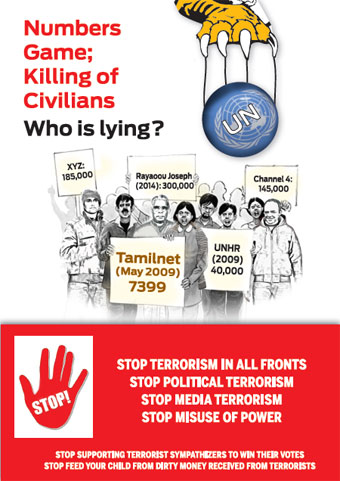Raja Raja Chola 1 and the quicksand of Tamil chauvinism
The history of this island can be read as an account of invasion, resistance, conquering and routing the enemy. It is also a history of migratory waves and, in recent times, emigration as well. There are of course all kinds of histories. There are those written by the winners which some claim make their authenticity questionable. There are histories embedded in folk traditions. Histories can be read through careful perusal of archaeological record. There are claims of place in history, some substantiated and others not.
Some say history is version, but no one will dispute that this assertion makes the version that the Ruwanweliseya is a Catholic Church anything but ridiculous. There are people who are scared of the word history and they tend to be those who make grand claims without substantiation or have little or no history to talk about.
These are the ones who murmur the ‘multi-ethnic, multi-religious’ mantra not so much as a desired or desirable resolution as a manifest aversion to acknowledgment that certain peoples and certain religious traditions have contributed overwhelmingly to the admittedly problematic composites called Sri Lanka and Sri Lankans.
We remain products of who we were, who our ancestors were and what they did, whether we like it or not. In other words, history sits at the head table of the present and in ways that are disconcerting to some.
One easy escape from historical discomfiture is the construction of more comforting narratives of event, personality and associated metaphors. It takes much effort, a lot of money, a lot of purchasing, myth-models and propaganda. In my view that’s an option that Tamil nationalism was forced to embrace.
The success of that particular effort is indicated in the fact that eelamists have managed to convince some that ‘north’ is Tamil and ‘south’ Sinhala, that devolution (which includes federalist and secessionist options) makes sense because the North and East (they don’t say Northern and Eastern Provinces, because the demarcation-less articulation makes for further inflation of territorial claim) are ‘the traditional homelands of the Tamils’.
They do not unpack these terms because doing so would force them to swallow the hard facts of demographic reality (over half the Tamils live outside these two provinces) and geographical factors (most of the Eastern Province is made of Grama Niladhari Divisions with majority Sinhala populations).
Then there is also history
They dare not talk of archaeological evidence. They will say the Mahawamsa was written by racist Buddhist monks but do not have anything close to a shred of evidence to counter what’s on the ground in these areas (even if one were to discount the Mahawamsa). They cannot talk about a permanent Tamil presence in demographically significant terms. At best it is about Tamils who chose to stay behind after the occasional South India invasion was turned back.
There is one exception: the golden age of Chola aggression. The 10th Century AD.
This was the time the Cholas invaded not just this island but vast swathes of the subcontinent as well as territories in what is now known as South-East Asia. The LTTE adopted the Tiger emblem from the flag of the glory days of Chola domination.
Tamil nationalism, desperately seeking a historical prop, picked a derivative of the name that the Cholas used for the island, ‘Ila-Mandalam’. They were careless. Raja Raja 1, during whose time the Chola empire reached its zenith of glory, not only invaded but plundered and bragged about the plundering.
The Archaeological Survey of India, for example, includes reference to inscriptions at various Hindu temples built with the wealth looted from lands conquered by Raja Raja 1. These inscriptions list the names of lands he conquered and refers to the island we today call Sri Lanka as ‘Ila-Mandalam’. ‘Ila’ is a corruption of ‘Hela’ or its four-part elaboration ‘Sihala’ (from ‘Siv-Hela’, made up of Yaksha, Naga, Deva and Raksha, each associated with a vocational sphere) and it is indeed the ultimate irony that the LTTE and its Tamil nationalist precursors used this to coin ‘eelam’.
If this too is version, then Tamil nationalists could have all doubts erased by reading the elaboration that Raja Raja 1, no less, offers: ‘the land of the warlike Singalas’.
Whether the Singalas are/were warlike is not relevant to the issue of historical claim.
What matters is that Raja Raja 1 had no doubt whatsoever that this land belonged to the Singalas.
If it was the case that Singalas shared ownership with some other community, this fact would have been articulated especially if military intervention sought to buttress claim of or defend a kindred community.
In other words. it was a clear statement that ownership of territory had been wrested from the Singalas.
Now the inscriptions at the temples in Tanjavur and Ukkal were not authored by someone who had any interest in cooking history in favour of the Singalas.
These were not the observations of some interfering, arrogant and ignorant white man.
They are not taken from the Mahawamsa. Nor are they the 21st Century scribblings of a chauvinistic Sinhalese intent on deny property rights to Tamil Sri Lankans.
They are straight forward and matter-of-fact articulations of a particular political reality, authored in passing by someone who had absolutely no stake in conceding anything to those he conquered.
The claims about history put forward by Eelamists are eminently debunkable by a lot of archaeological and other evidence, but what shoots these to pieces is ironically the very source that they draw inspiration from: Raja Raja Chola I.
Does this mean that Tamils are not part of this polity or that they are or need to reconcile themselves to being second class citizens? No! It merely means that they do not have any privileged claim on historical grounds to any part of the territory that is called Sri Lanka. As citizens they have every right to expect the same privileges that citizenships bestow on all other communities and all anomalies relating to these needs to be corrected.
Such correction as is necessary cannot be territory based as history, geography and demography do not support such arrangements. Devolution is out, therefore.
As for those Eelam-fixated sections of Tamil nationalists, they can relax now: Raja Raja Chola I has taken a huge load off their shoulders. Had they realised this several decades ago, this country would have been spared a lot of death, destruction and dispossession. Time to move on, though. Raja Raja Chola I demands this.
930 Viewers








